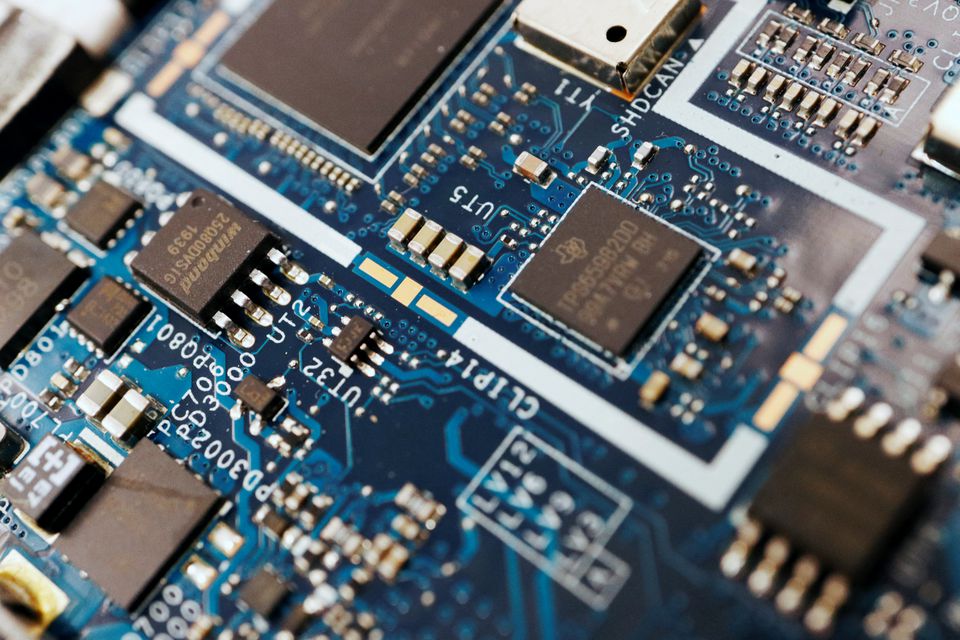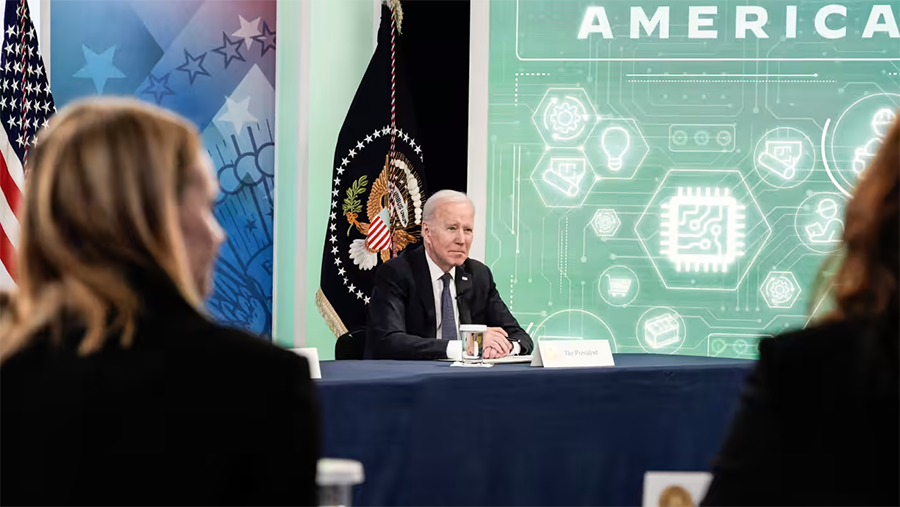
More than a year after its initial introduction, and in the wake of chip manufacturers threatening to scale back their U.S. projects, the United States Senate finally took action on Tuesday to move forward on the bill known as the CHIPS Act. After months of at times heavy discussion/arguing, the stage is set for both the House of Representatives and the Senate to vote on its passage, perhaps as early as next week.
See more on this development with the CHIPS Act
Creating Helpful Incentives to Produce Semiconductors in America – the CHIPS Act – is the centerpiece of the Biden administration’s goal of reestablishing the United States to the role it once held as the dominant supplier of semiconductors or integrated circuits (also known as chips) globally. As supply chain disruptions and exploding demand caused a worldwide shortage of chips, the President sought to build up America’s production and to blunt the growing role of China in chip production.
On Tuesday, the Senate took a procedural vote to advance what Reuters calls a “slimmed down version” of the CHIPS Act. The vote was 64 to 34, which means that it passed on a bipartisan basis. The changed version of the bill will need to be considered by the House of Representatives, and Speaker Nancy Pelosi has already said they will take action on the measure next week.
Final Vote on Bill Possibly Next Week
Once all the differences are hammered out, both chambers will take their final vote perhaps as early as the end of next week, with most signs pointing towards its ultimate passage. The news was well received on Wall Street and shares in several of the chip manufacturers surged in the wake of this development, including Intel (+3.9%), Nvidia (+5.5%), Texas Instruments (+3.1%) – all substantially better than the S&P 500’s jump of 2.8%, according to CNBC.
At the heart of the CHIPS Act, is an effort to incentivize manufacturers to build semiconductor fabrication facilities (fabs) in the U.S. to improve the resilience of our technology supply chain and reduce our dependence on Asian manufacturers. While elements of this bill are still being worked out, the version discussed yesterday offers chip makers about $54 billion in subsidies, as well as a four-year 25% tax credit for plants built in the U.S. According to Reuters, the tax credits are worth another $24 billion on top of the subsidies.

Chip Shortages are Dangerous to Our Economy & Our Security
During the last two years in the wake of the COVID pandemic, it became clear that there was a large-scale disruption of supply chains that caused major problems for several industries. Most notably, Tech struggled with a massive chip shortage that impacted several economically and strategically important industries, such as automobile manufacturers, smartphone makers, consumer technology companies, and strategically significant defense systems manufacturers.
Politicians recognized the danger of the situation and the Biden Administration immediately set to devise a new, more robust supply chain that protects both our supply of critical chips and establishes the United States as a leading supplier of chips to the world. The concept has almost always had bipartisan support, but the details have been tough to work out. There was a lot of controversy surrounding the idea of offering subsidies to an industry that is already quite profitable and wealthy.
Chipmakers Threatened to Scale Back U.S. Plans
Earlier this month, I reported that chipmakers, frustrated with languishing inaction by the U.S. Congress in moving the CHIPS Act forward, had threatened to scale back their plans for facilities in the U.S. Keep in mind, that it has been a year since the bill was first proposed, and chipmakers say these subsidies are necessary to speed up the projects for these desperately needed facilities. Between this threat and President Biden’s urging that Congress pass this semiconductor bill before the August recess – the Senate logjam finally broke with the procedural vote on Tuesday.

There are several projects planned by chipmakers, but perhaps the most impressive is the announcement by Intel Corp. in January that it would spend $20 billion to build a new fab in Ohio. This announcement took place after Intel had already broken ground on two new fabs in Arizona. Intel says the $20 billion Ohio project is just the start there, as the company has plans for as many as eight total fabrication plants there requiring a total investment approaching $100 billion. This would be the single largest investment on record in the state of Ohio…and it is a project that they want very badly.
Senator: We Need to ‘Invest in American R&D’
Today’s vote is really about whether we’re going to stop shipping jobs overseas, and instead invest in American R&D. If we invest in American R&D, then we will see the plant being talked about in Ohio get built instead of being immediately built in Europe.
Senator Maria Cantwell, Democratic chairperson of the Senate Commerce Committee, urging lawmakers to vote “yes”
This bill is a “pared-down” version of rival versions in the Senate and the House which had become stalled. The initial bill introduced in June 2021 was a total package worth $250 billion. However, there seems to be a lot of optimism that some version of the bill will soon finally be passed due to broad bipartisan support to bolster the chip industry in America.




To me, this is more corporate welfare. These companies (Intel) can afford to build their factories without more taxpayers’ money. It also now appears to be wrapped in a $280B bill. I encourage viewing of this YouTube video from the five-minute mark to the 10:55 mark. Yes, it is heavy with the producer’s opinion, but it does give a lot more insight than what you will find elsewhere.
https://youtu.be/7EgioDsNHLE?t=317